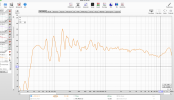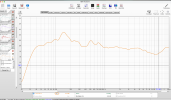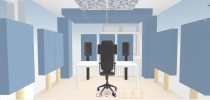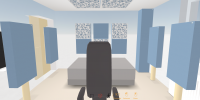producer12999
Member
Hi, I am currently planning my studio, my room is 18 m2 and the setup is on the shorter wall. The room is reasonably symmetrical except for the windows, but there are none at the first reflection points or backwall.
I made the first measurements in different positions and distances of the speaker and listening position, and the measurements all look almost the same. Is it normal for untreated rooms to look like this? There is currently nothing in the room except a bed. I don’t like to sit on the longer wall, but I didn’t take measurements on the longer wall. If I would sit on the longer wall I would have to place my bed to the left of me, in general the room would be more asymmetrical.
What do you think? I’m building my home studio soon with a big bugdet. Can I continue the work with this frequency response? Will these massive standing waves be minimized by the new steps? What do you think.
Thank you very much!
I made the first measurements in different positions and distances of the speaker and listening position, and the measurements all look almost the same. Is it normal for untreated rooms to look like this? There is currently nothing in the room except a bed. I don’t like to sit on the longer wall, but I didn’t take measurements on the longer wall. If I would sit on the longer wall I would have to place my bed to the left of me, in general the room would be more asymmetrical.
What do you think? I’m building my home studio soon with a big bugdet. Can I continue the work with this frequency response? Will these massive standing waves be minimized by the new steps? What do you think.
Thank you very much!





